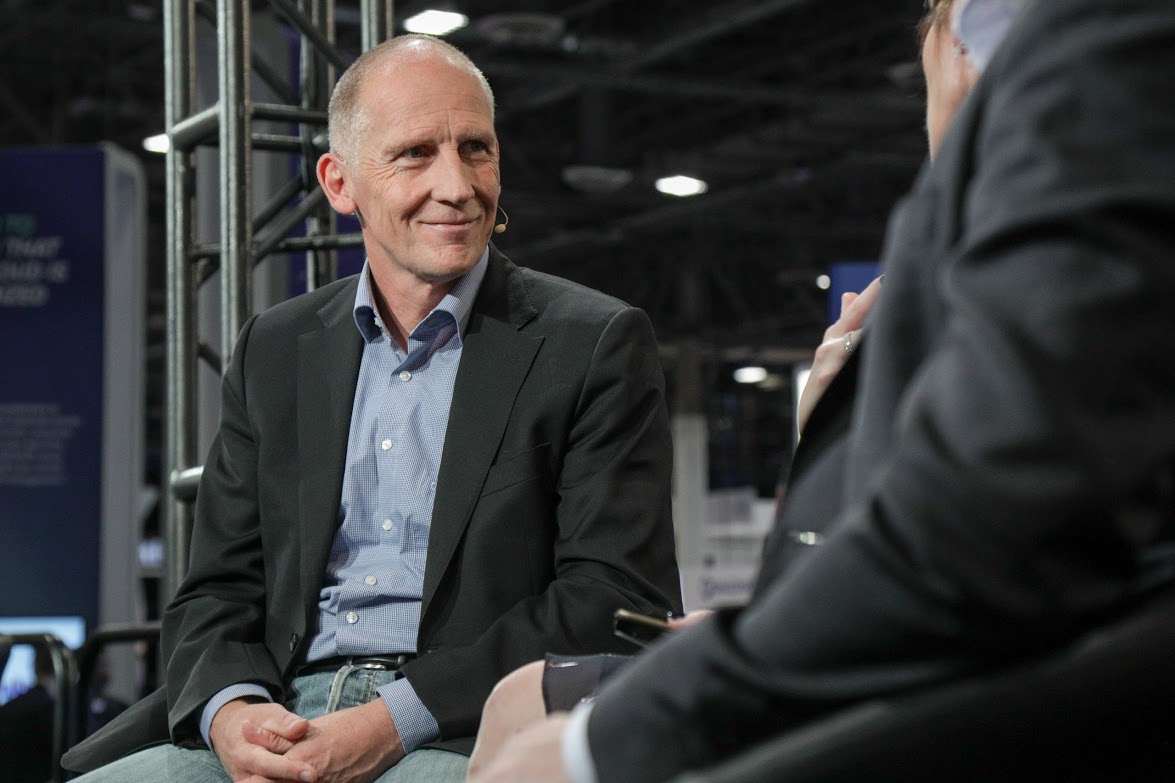 APPS
APPS
 APPS
APPS
 APPS
APPS
Call it the Google effect. The simpler and more intuitive an application, the more sophisticated the technology that built it. With microservices, businesses are building more such apps, which demand more powerful and approachable monitoring, according to Christoph Pfister (pictured), executive vice president of products at SolarWinds Worldwide LLC.
“These apps have become massively complex,” Pfister said. At the same time, businesses are more app-dependent than ever; examples of disruptive startups prove that a superior app can help a company gobble up a serious slice of market pie.
“These apps are going to deliver value to businesses, to consumers, and therefore need to run pretty much flawlessly,” Pfister added. Microservices that offer rich capabilities to developers can also make each app as fragile as a house of cards. To prevent collapses, monitoring is more important than ever.
Pfister spoke with Lisa Martin (@LuccaZara), host of theCUBE, SiliconANGLE Media’s mobile livestreaming studio, and guest host Justin Warren (@jpwarren), chief analyst at PivotNine Pty Ltd., during an interview at the AWS re:Invent conference in Las Vegas, Nevada. (* Disclosure below.)
Most businesses running between 500 to 800 apps monitor only about 15 percent of them, according to Pfister. One reason is that application monitoring has typically been expensive. Another reason is tedious manual instrumentation. SolarWinds has cut away both of these problems with its announcement of AppOptics. With it, the company will bring the power and simplicity that made its network management monitoring the market-share leader to cloud applications monitoring, Pfister added.
AppOptics delivers the “three pillars of observability” — metrics, logs and transaction traces — to applications. “Without transaction traces in these microservices-type architectures, it’s very, very difficult to get to the root cause of issues,” Pfister said. Users will pay $7.50 per host, per month compared to the current typical rate of about $100 a month. Also, instrumentation is automatic.
SolarWinds acquisition Pingdom for digital experience monitoring boasts high-profile users like Uber Technologies Inc. and The New York Times. It adds another layer to monitoring for businesses, Pfister explained.
“One goal of monitoring is to be ahead of your consumers in terms of noticing problems, and so for that, the best way is really to have synthetic transactions that simulate user behavior hitting your app,” he concluded.
Watch the complete video interview below, and be sure to check out more of SiliconANGLE’s and theCUBE’s coverage of AWS re:Invent. (* Disclosure: SolarWinds Worldwide LLC sponsored this segment of theCUBE. Neither SolarWinds nor other sponsors have editorial control over content on theCUBE or SiliconANGLE.)
Support our mission to keep content open and free by engaging with theCUBE community. Join theCUBE’s Alumni Trust Network, where technology leaders connect, share intelligence and create opportunities.
Founded by tech visionaries John Furrier and Dave Vellante, SiliconANGLE Media has built a dynamic ecosystem of industry-leading digital media brands that reach 15+ million elite tech professionals. Our new proprietary theCUBE AI Video Cloud is breaking ground in audience interaction, leveraging theCUBEai.com neural network to help technology companies make data-driven decisions and stay at the forefront of industry conversations.